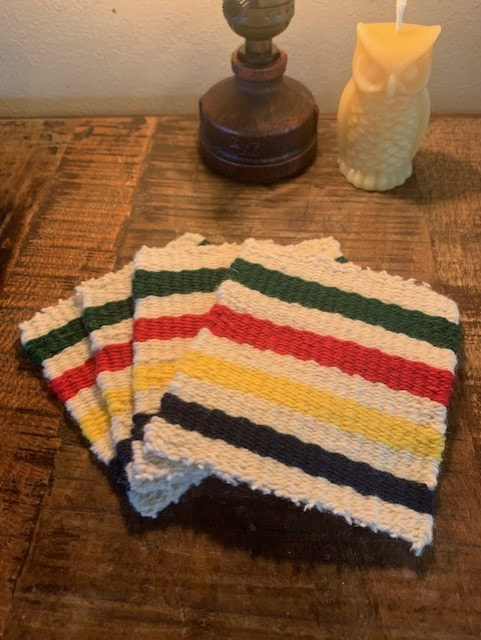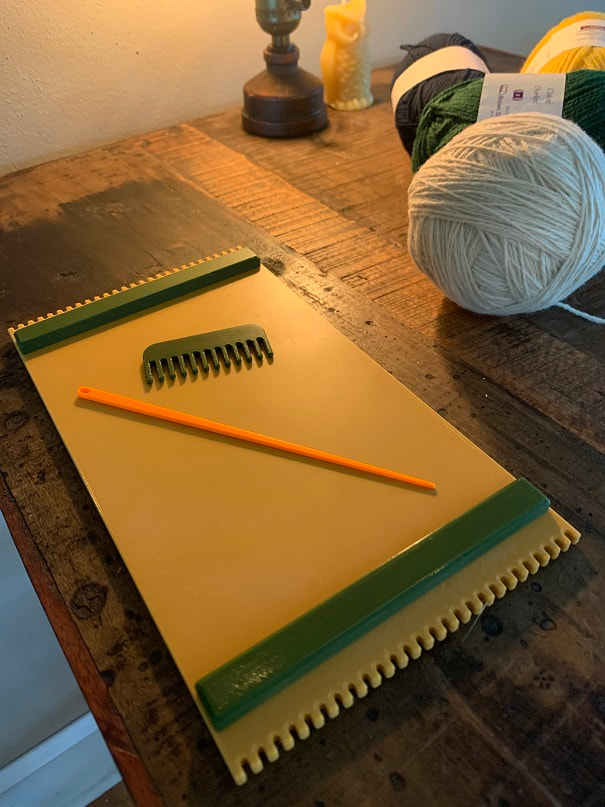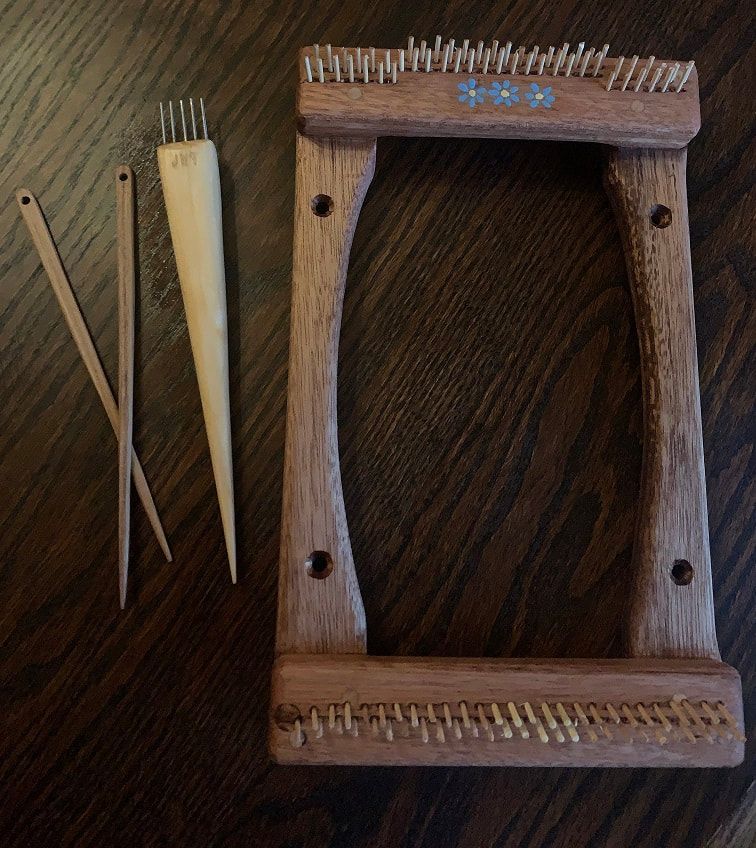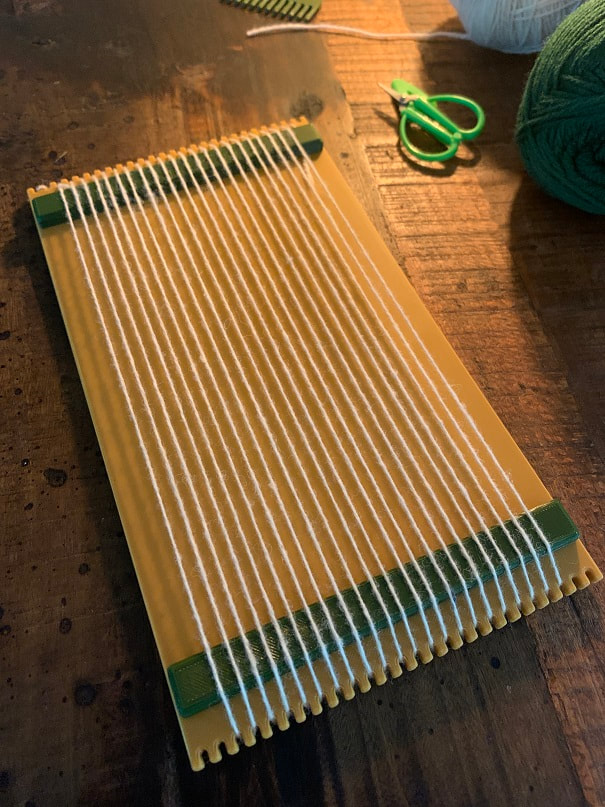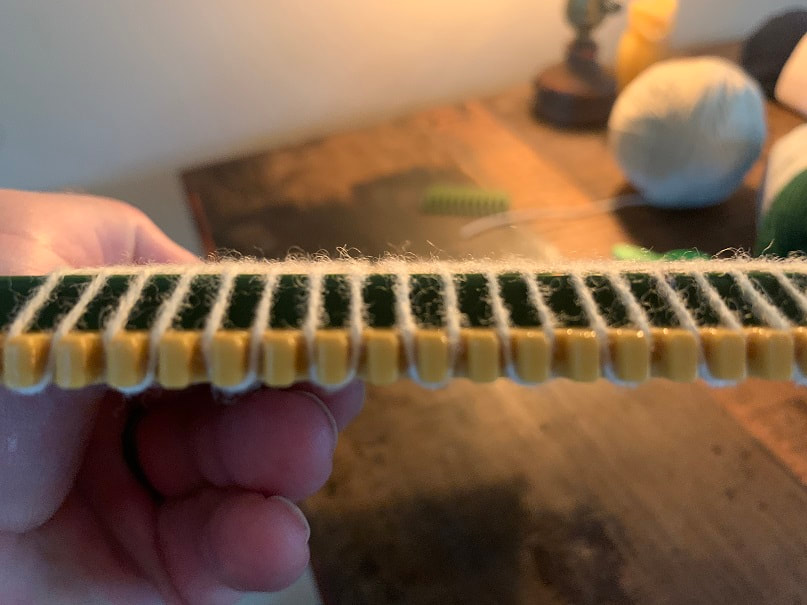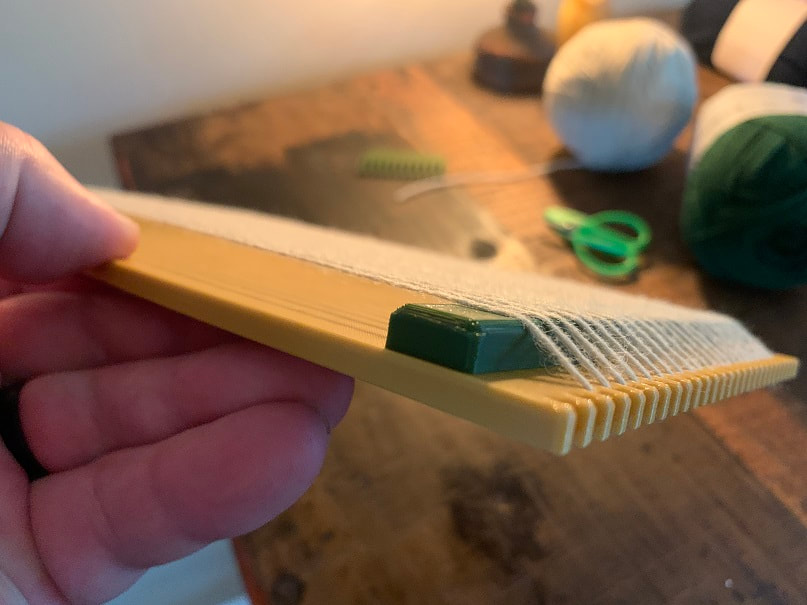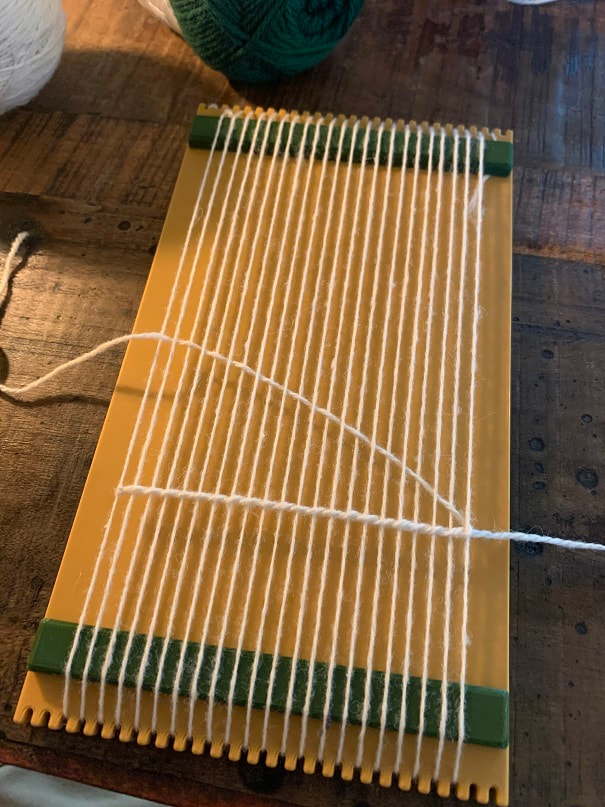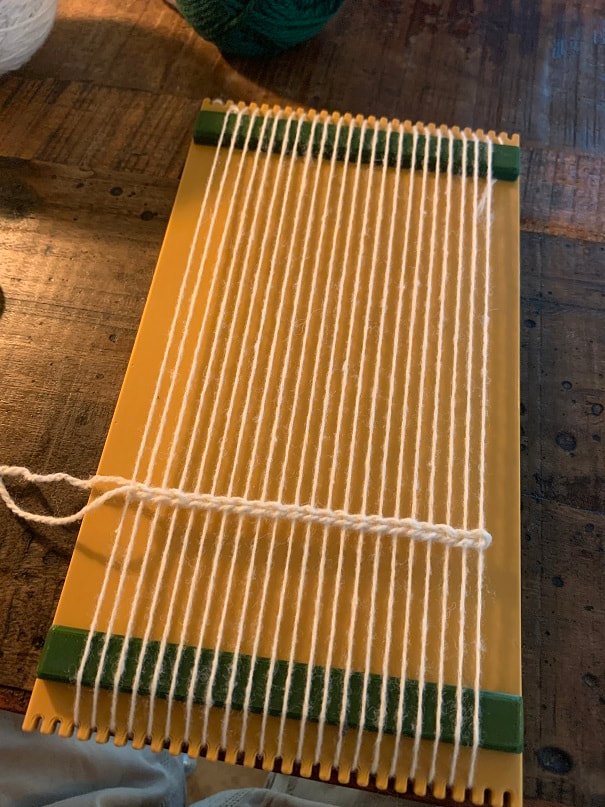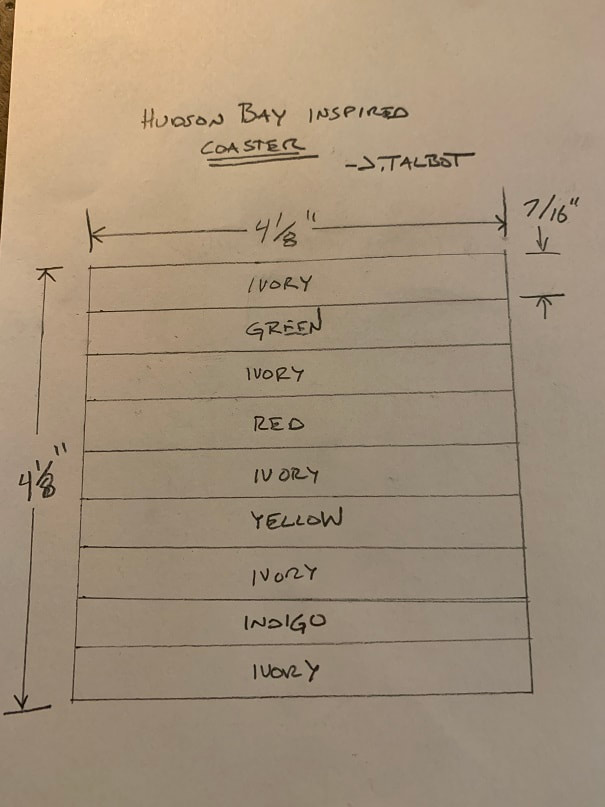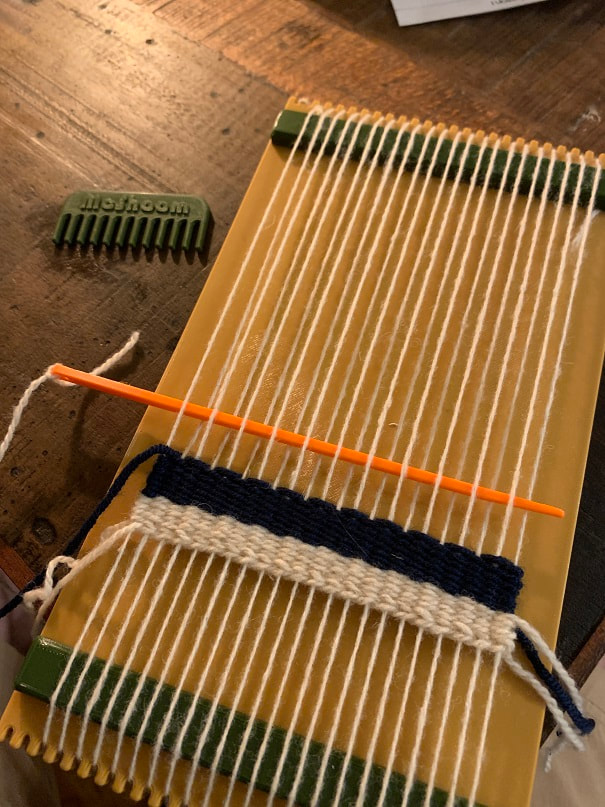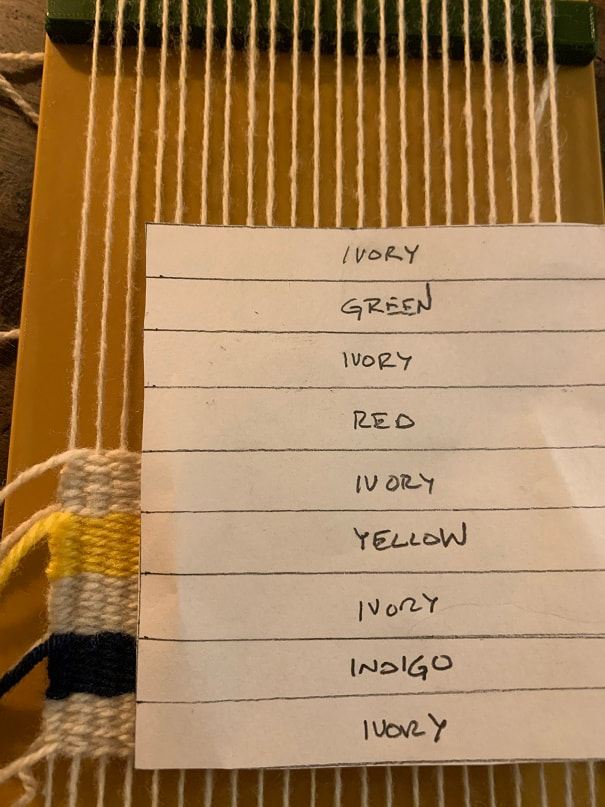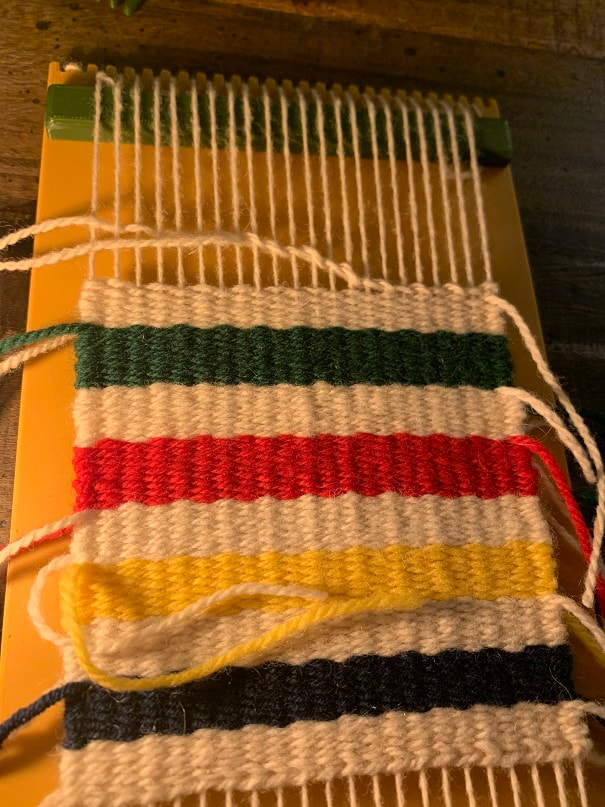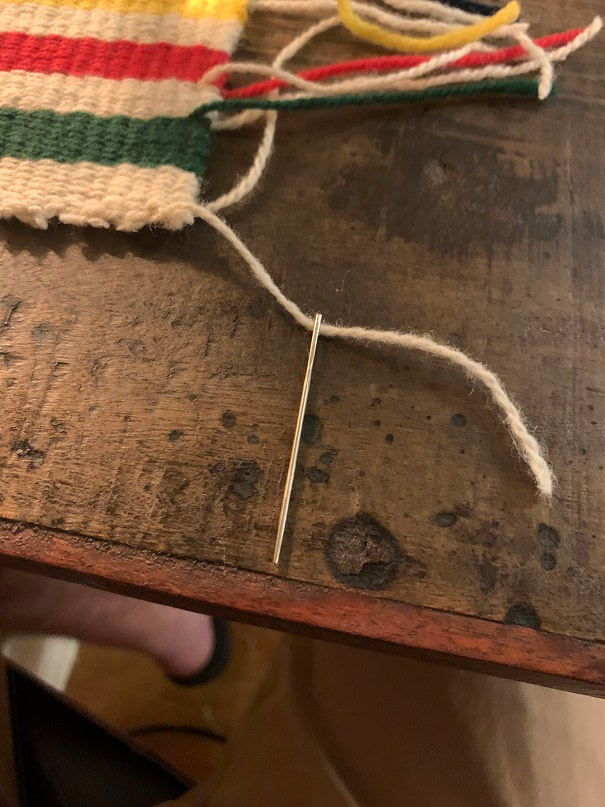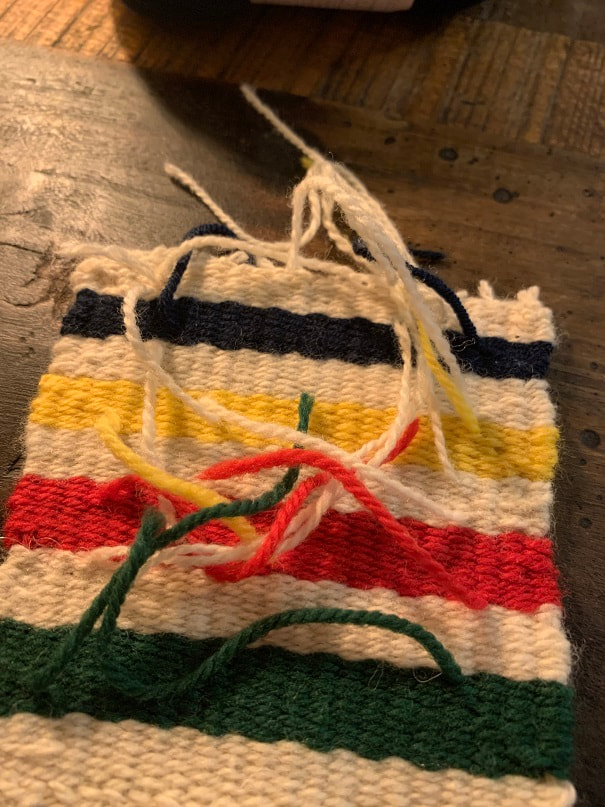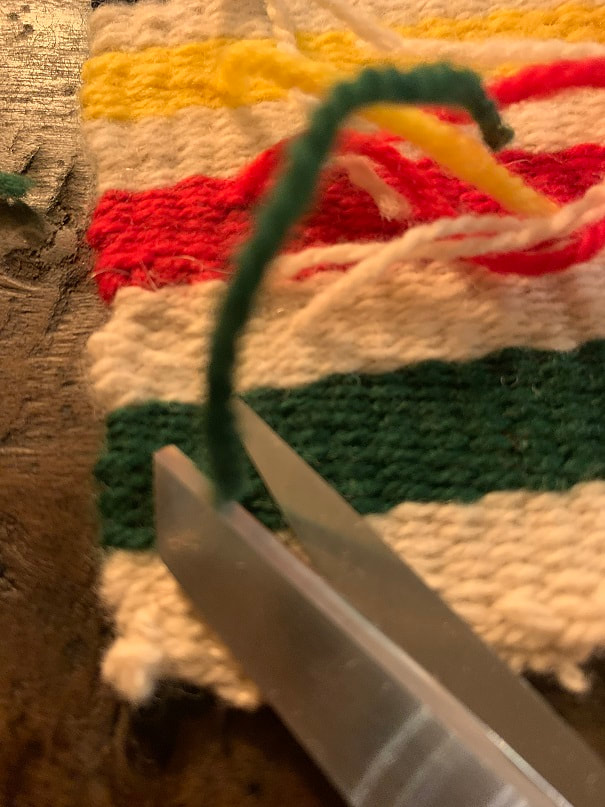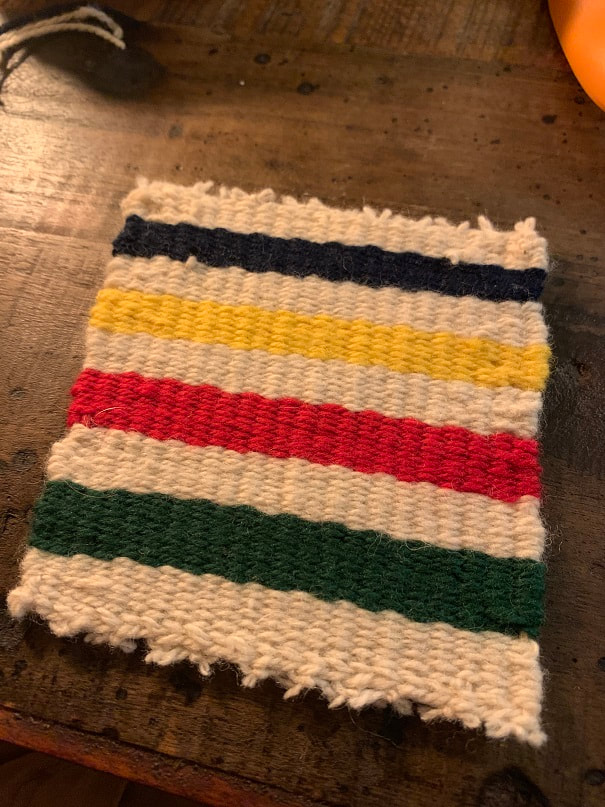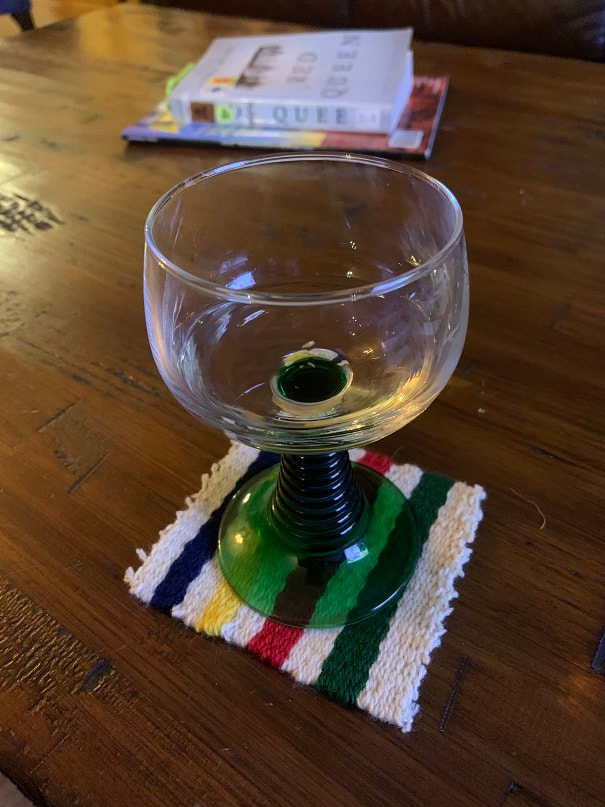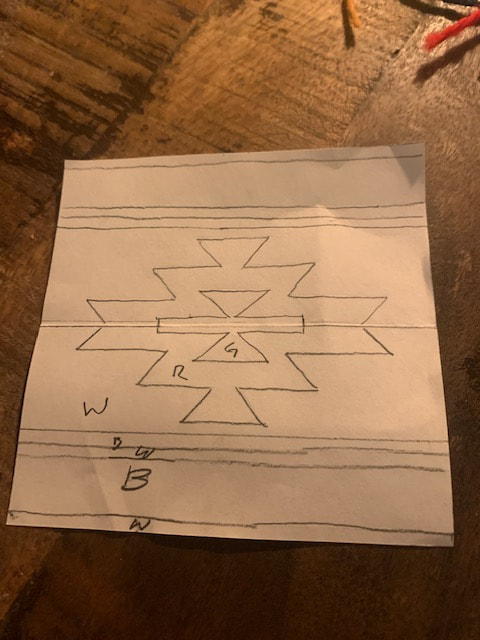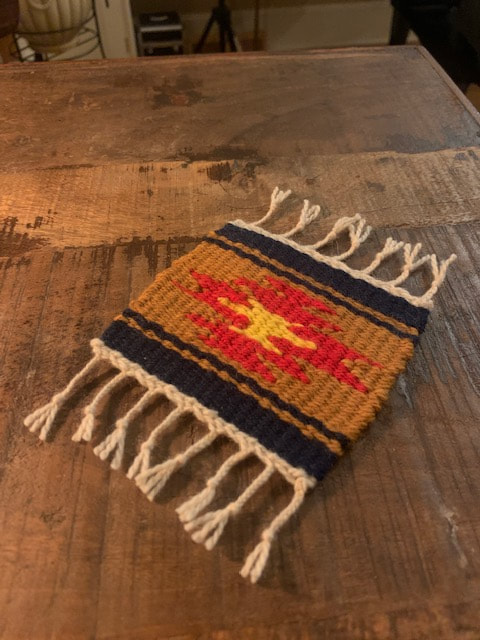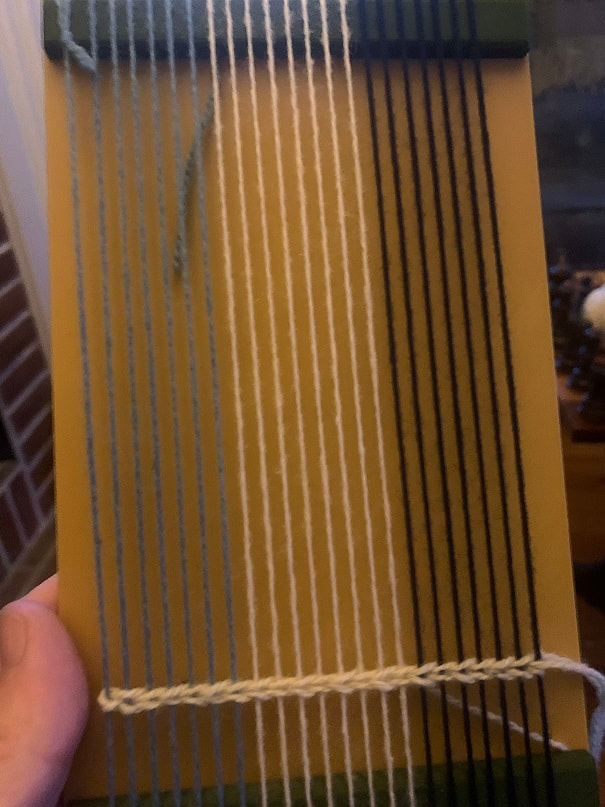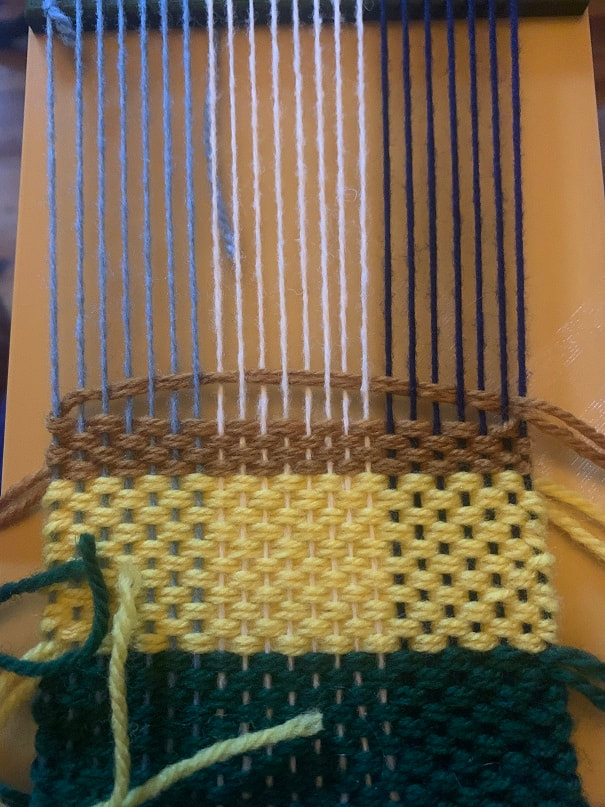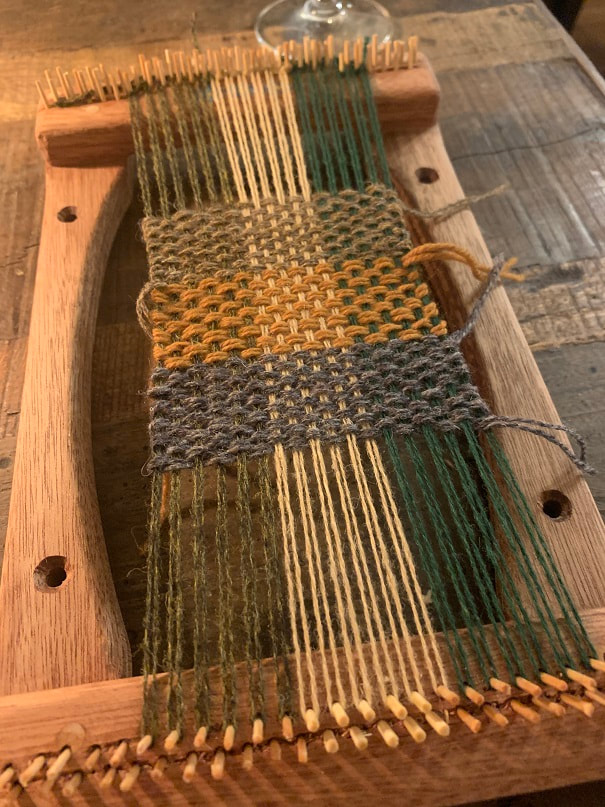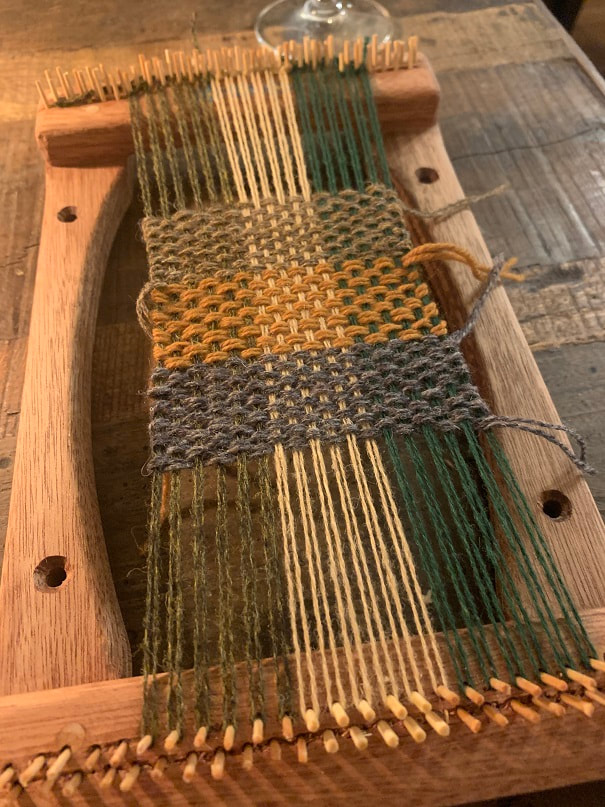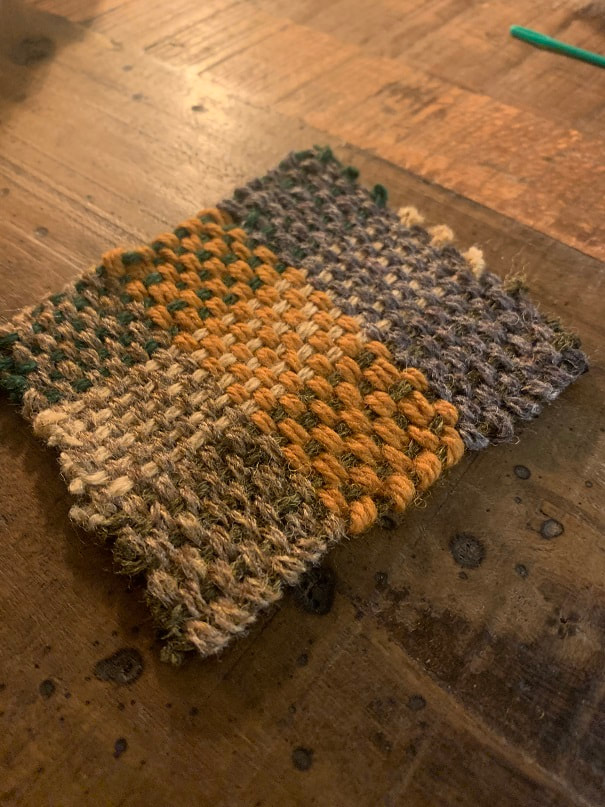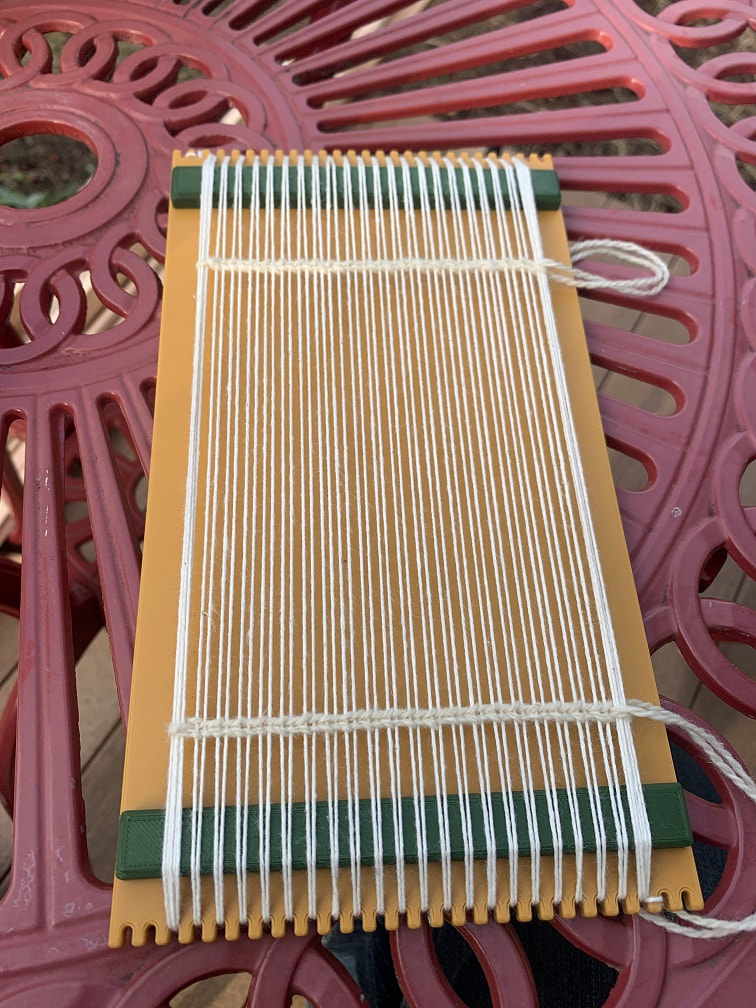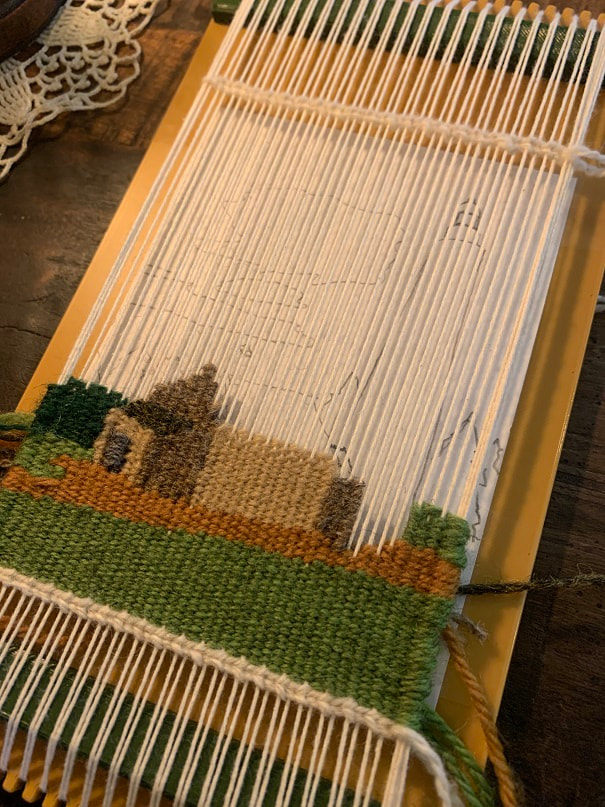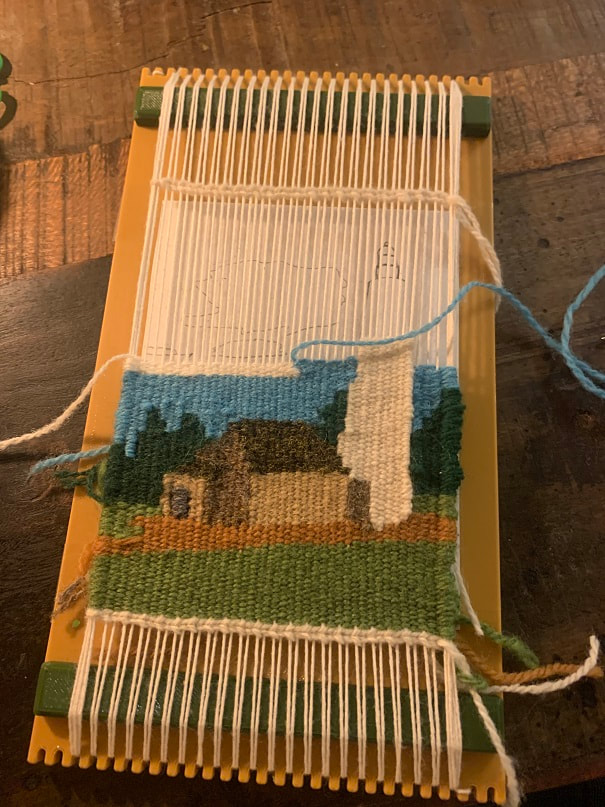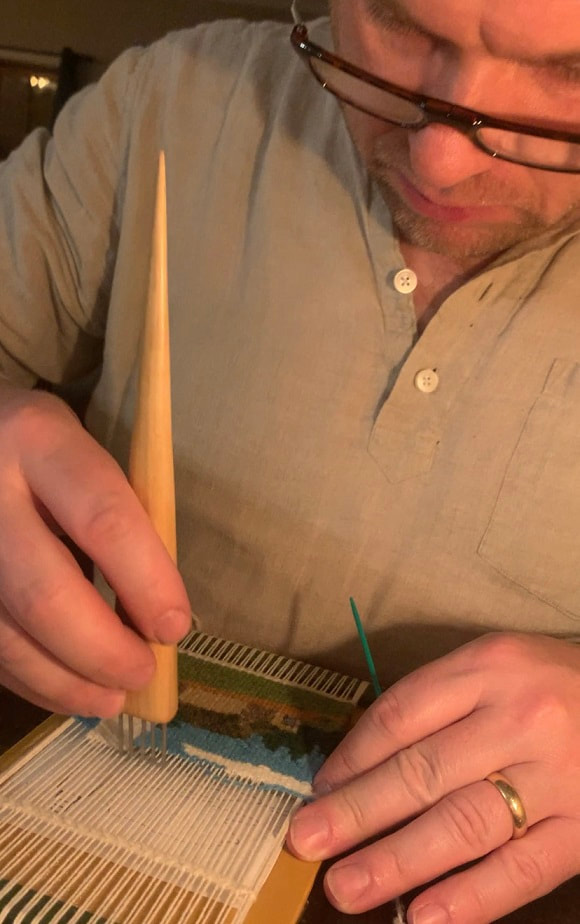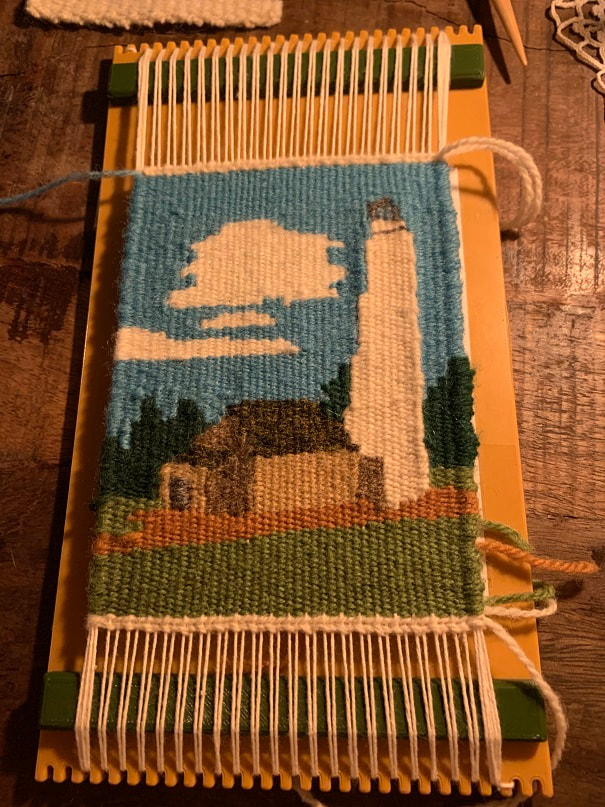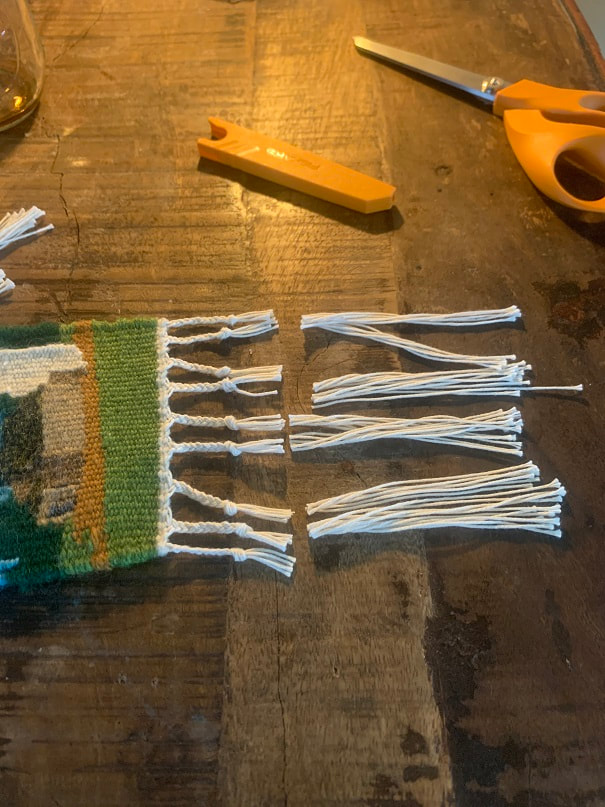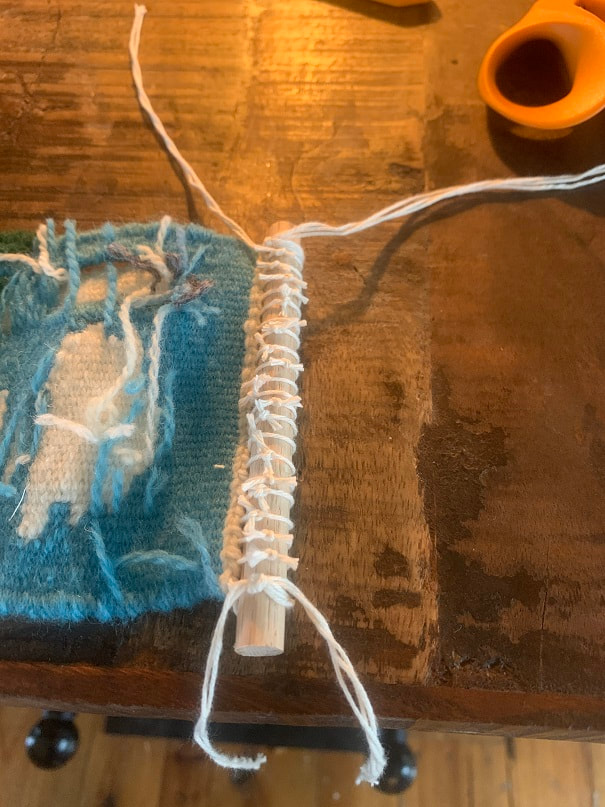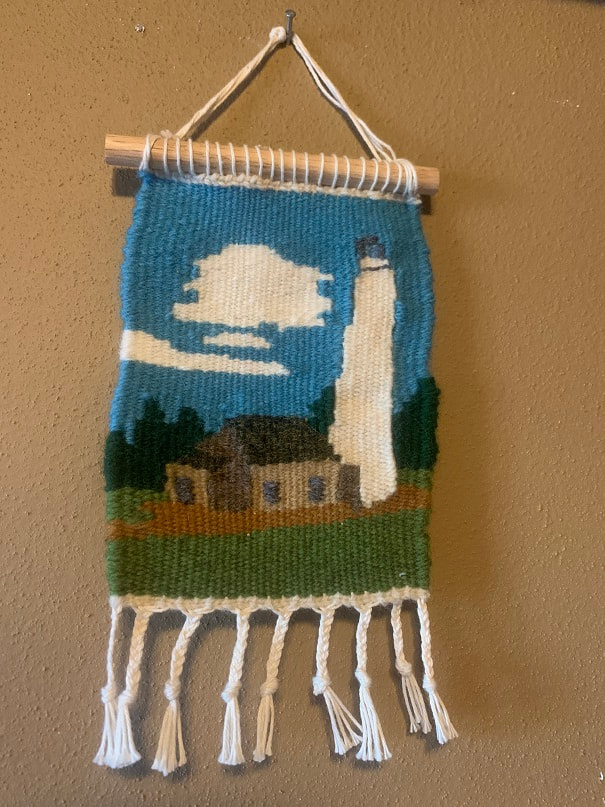Warp: the yarn or other type of string or cord that is stretched over a loom, typically the vertical strings on a loom. Weft: the yarn or other type of string or cord that is woven back and forth, typically horizontally across the warp.
Weaving by hand on a small loom that can be held in one's hand is such a peaceful, therapeutic, creative endeavor. I encourage you to try it. Small hand looms can be made cheaply , or bought.
On this page I will show photos and steps I followed to make:
- Hudson Bay Point Blanket Themed Coasters
- Various Plaid Coasters
- My first tapestry piece made on the mini loom
Small Looms used to make these projects:
Before I get to the weaving, here are photos of the two small looms that I made. Details on how to make these looms is on my making mini looms page.
You could buy a little loom such as this, or make one out of wood or cardboard.
Weaving a Hudson Bay Inspired Wool Coaster on the Mini Loom:
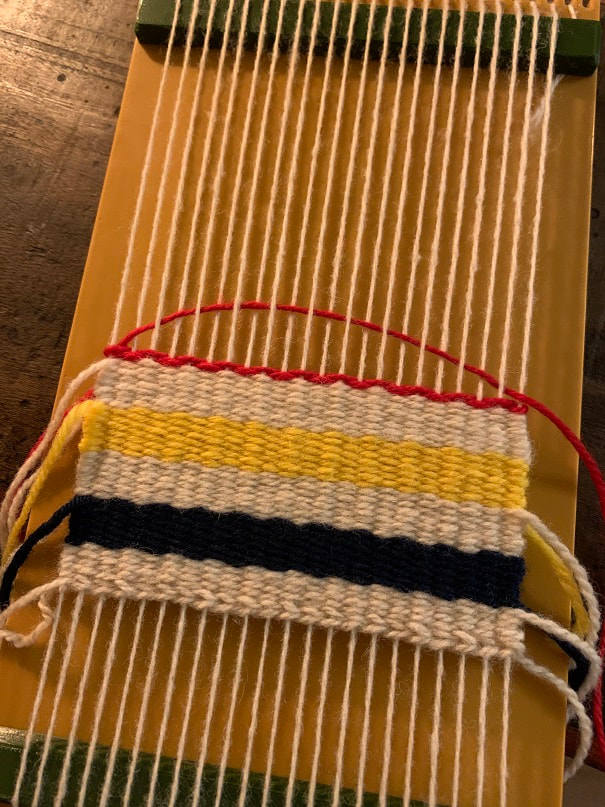
A common mistake that I made on earlier projects, was to weave to tightly around the outer edges (selvedge) which results in the woven cloth necking in and getting narrower and narrower as you weave. Be careful not to over tighten the weft when you loop around the outer edges of your weaving, and also leave a "hill" like this in the weft before you beat it down.
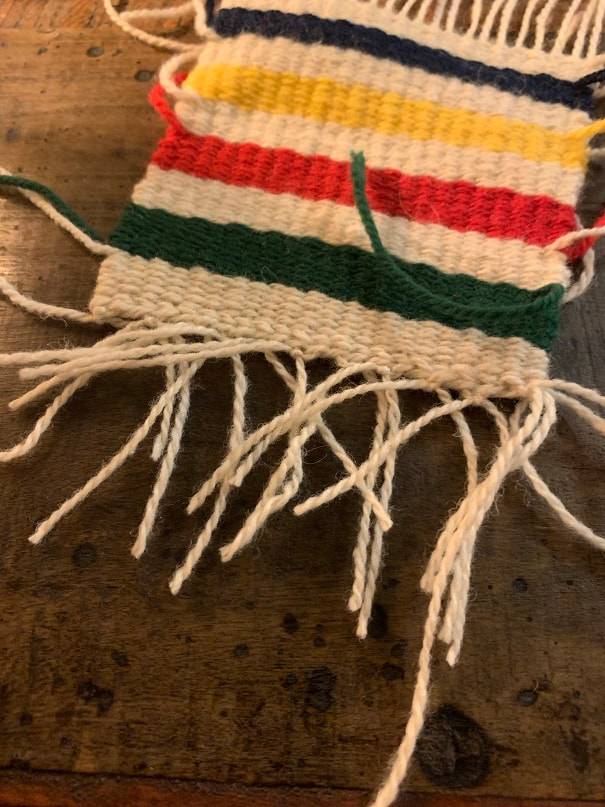
There are many ways to finish off the warp strings that extend from the top and bottom. You could braid three together and leave them long, you could tie them all and leave long tassles, you could stitch the ends into the weaving. I tied square knots and trimmed the ends short. Here is a photo of square knots tied using two warps per knot.

Here I am starting to stitch a loose end back into the weaving. Keep the loose end within the bar of same color. Also do your best to keep the loose end on the bottom face of the weaving so that it can't be seen from the other side (top of the weaving), make sure all the tails come out on the back side of the weaving.
Native American Themed Wool Coaster
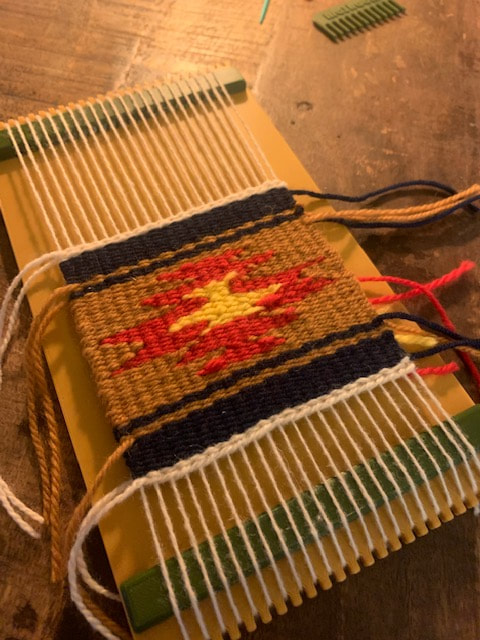
This coaster was my first attempt at tapestry style weaving where you weave multiple colors in a row in order to make a design. For this coaster I want longer tassles left over at the, as seen in the photo below, so I wrapped the warp all the way around the back of the loom each time as I strung the warp into the notches at the top and bottom of the loom.
Plaid Style Weaving: Version 1: One Warp yarn and doubled up Weft
Here is a coaster idea with three different colors of warp strings. I will use single warp strings for this project and each time I weave the weft across I will use a doubled up yarn strand. This will result in a "warp facing weave" in which the warp strings will be visible.
Plaid Style Weaving Version 2: Doubled up Warp and Doubled up Weft
Here I wove two warp yarns between 2 weft yarns to have both warp and weft well exposed.
My First Effort at Tapestry!:
Thicker sevedge (selvedge is the out warp strands that make up the right and left edge of the piece) and twice the warp strands, make this piece 10 EPI (ends per inch, or 10 warp strings per inch, vs the spacing of the notches in the loom which are at 5EPI).
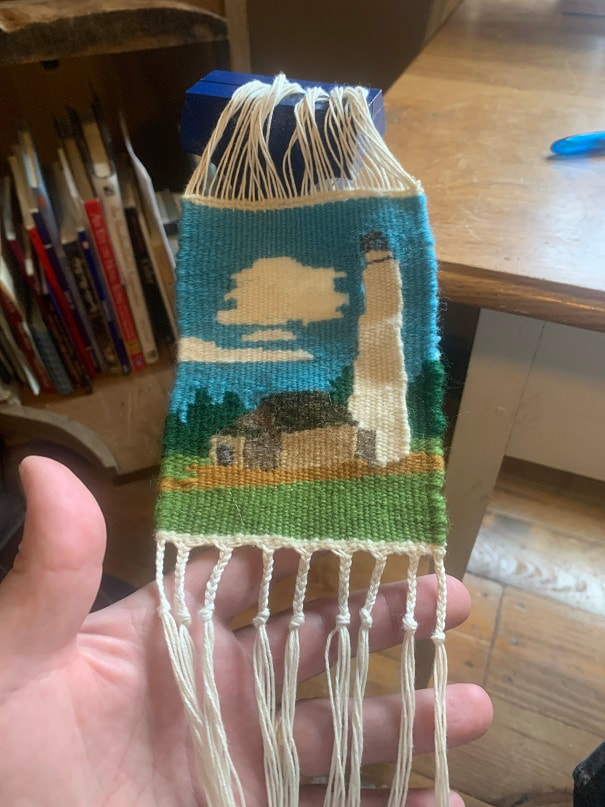
When the weaving was done, I cut the weft and removed the tapestry. I clamped the warp that was extending from the top of the weaving, so that I could braid and tie off the warp on the bottom of the tapestry. ALSO, do you see that long vertical edge between white and blue on the right side of the lighthouse? This was essentially a long "slot" in the weaving, so I went in and on the back of the tapestry, used fine thread to stitched that slot tight together.
